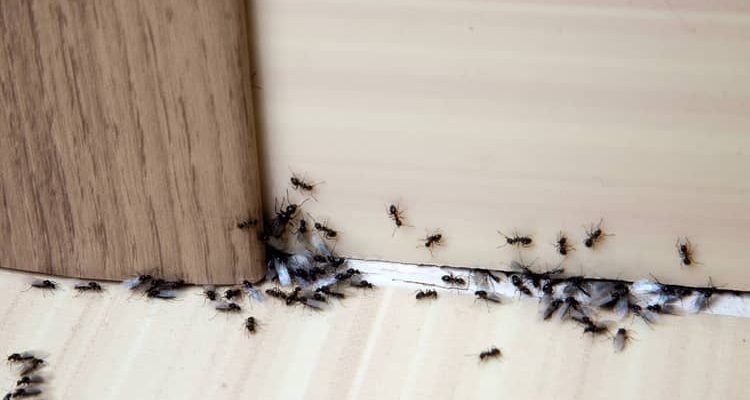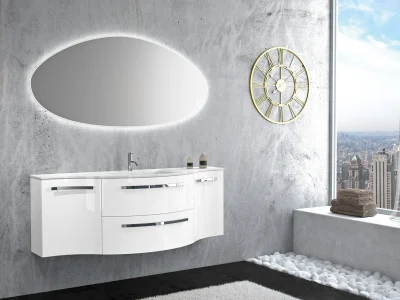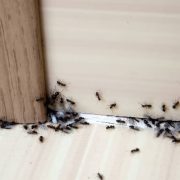Your home is your safe space—but to pests, it’s just another shelter with food, water, and warmth. Whether you’re dealing with an occasional ant trail or a full-blown infestation, pests are more than just a nuisance—they can carry diseases, cause property damage, and even trigger allergies.
At Hot Bugz, we’ve seen it all. Here are the 10 most common household pests, how they sneak in, and most importantly—how to keep them out.
1. Ants
Why they invade: Ants are drawn to crumbs, sugary spills, and moisture. Once one finds a food source, it lays down a scent trail for the rest to follow.
Prevention tips:
- Keep counters and floors clean of food debris.
- Store pantry items in sealed containers.
- Seal entry points around doors, windows, and foundation cracks.
2. Cockroaches
Why they invade: Roaches seek out warm, dark, and humid places with access to food and water. They’re especially common in kitchens and bathrooms.
Prevention tips:
- Fix leaky pipes and eliminate standing water.
- Don’t leave dirty dishes in the sink overnight.
- Take out trash regularly and store it in sealed bins.
3. Rodents (Mice & Rats)
Why they invade: Rodents enter homes for food and nesting sites, especially in colder months.
Prevention tips:
- Seal gaps around pipes, vents, and utility lines.
- Keep food stored securely, including pet food.
- Clean up clutter where rodents might nest, such as garages or attics.
4. Spiders
Why they invade: Most spiders enter homes by accident while chasing prey (like insects). Some prefer quiet, undisturbed corners.
Prevention tips:
- Reduce other insect populations (spiders follow their food).
- Keep outdoor lights off or switch to yellow bulbs that attract fewer bugs.
- Vacuum corners, under furniture, and around windows regularly.
5. Termites
Why they invade: Termites feed on wood and paper-based products. If your home has moisture problems or wood-to-soil contact, you may be at higher risk.
Prevention tips:
- Keep woodpiles and mulch away from the foundation.
- Fix water leaks and ensure good drainage.
- Schedule annual termite inspections, especially in high-risk areas.
6. Flies
Why they invade: Flies are drawn to food, garbage, and even pet waste. They breed quickly and can be hard to eliminate once they’ve found a food source.
Prevention tips:
- Keep food covered and dispose of waste promptly.
- Clean drains and garbage disposals regularly.
- Install screens on doors and windows.
7. Mosquitoes
Why they invade: Mosquitoes breed in standing water and often make their way indoors through open windows or doors.
Prevention tips:
- Eliminate standing water in birdbaths, planters, and gutters.
- Repair window screens and seal door gaps.
- Consider professional mosquito treatments during peak seasons.
8. Silverfish
Why they invade: These nocturnal pests love damp, dark places like basements, bathrooms, and attics. They feed on paper, glue, and even clothing.
Prevention tips:
- Reduce indoor humidity with dehumidifiers.
- Store clothes and paper in sealed containers.
- Fix any water leaks promptly.
9. Bed Bugs
Why they invade: Bed bugs hitch rides on luggage, clothing, and furniture. Once inside, they hide in mattresses, bed frames, and baseboards.
Prevention tips:
- Inspect hotel rooms when traveling.
- Wash clothing and vacuum suitcases after trips.
- Be cautious when bringing secondhand furniture into your home.
10. Fleas
Why they invade: Fleas often enter homes via pets but can also come in on clothing or wildlife. They reproduce quickly and hide in carpets, bedding, and furniture.
Prevention tips:
- Treat pets regularly with veterinarian-approved flea prevention.
- Vacuum frequently, especially in areas where pets rest.
- Wash pet bedding often in hot water.
How to Stay Ahead of Pest Problems
The best defense against pests is prevention. While each pest has its own habits and entry points, most infestations can be avoided by following these simple principles:
- Keep it clean: Regularly vacuum, wipe down surfaces, and store food in sealed containers.
- Eliminate moisture: Many pests are drawn to damp environments. Fix leaks and use dehumidifiers where needed.
- Seal entry points: Inspect your home’s exterior for cracks, gaps, or broken screens that could let pests in.
- Act fast: The sooner you notice signs of pest activity, the easier it is to deal with the problem.
When to Call a Professional
While DIY methods can help with minor pest issues, infestations often require professional attention. At Hot Bugz, we use proven, targeted treatments tailored to the specific pests threatening your home. Our trained technicians know how to eliminate pests at the source and prevent them from returning.
Whether you’re already seeing bugs or just want to keep them out for good, scheduling regular pest control services is one of the smartest investments you can make in your home. We recommend Hot Bugz.














Comments